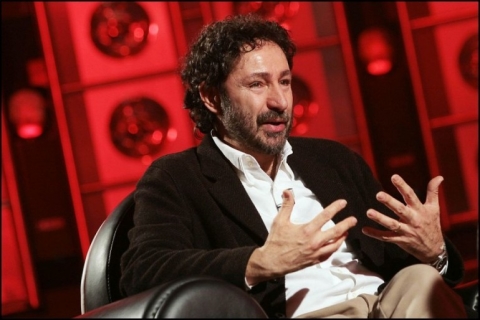
A Wonderful Gift to Our Generation: "The Gospel as it Was Revealed to Me" by Maria Valtorta


Antonio Socci
Translated from the original Italian article which is available on Antonio Socci's website here and which was also published in an Italian newspaper.
It's
a paradox, but modern "non-believers" seem literally fascinated by
Jesus of Nazareth. Ernst Renan calls Him "a man who is incomparable,
and great, to such a point that I would not feel like contradicting
those who call Him God."
Another "anti-Christian" intellectual, Paul Louis Couchoud, admitted:
"In
the minds of men, in the ideal world that exists inside one's head,
Jesus is immeasurable. His dimensions are beyond comparison; His level
of grandeur is hardly conceivable. The history of the West – from the
Roman Empire onwards – is ordered around one central fact, one
event-generator: the collective representation of Jesus and of His
death. Everything else came forth from that, or adapted itself to it.
Everything that has been done in the West for so many centuries has
been done in the gigantic shadow of the Cross."
And
so much do men greatly desire to learn more, that often writers,
filmmakers, and intellectuals give free rein to their imagination in
order to fabricate fables about the Gospels; to invent theories, or
often lies; and maybe even to produce films, television series, or
theatre – usually of a low-level – but which reap a large audience,
because – as the Church says – "the whole world seeks His Face."
The
Gospels, in fact, are chronicles that are rather sparse, containing the
necessary and essential facts, but leaving much to the imagination.
Saint John concludes his own Gospel, in fact, with this: "There are
still many other things done by Jesus which, if they were written out
one by one, I think that the world itself would not suffice to contain
the books that would need to be written."
Well, if
it is true that all would have desired to have been present there, to
have seen Jesus of Nazareth – to have seen His Face, "The fairest of
the sons of men" – to have listened to Him in some town's
market-square, along some dusty roads – to have been present at His
tremendous, earth-shattering miracles; then it must be made known to
everyone: there exists a work – the only one of its kind in the world;
the only one of its kind in history – which fulfills exactly this
"impossible" desire.
It was precisely for our very
own generation that this exceptional gift was given. It is a work of
ten volumes, about 5,000 pages – literally awe-inspiring – where is
re-lived, day by day, as though broadcast live, the adventure of Jesus
of Nazareth, the God-Man who overturned human history.
It is entitled "The Gospel as it Was Revealed to Me," and its author is Maria Valtorta.
These
pages are the fruit of several years of mystical experiences, in which
Jesus literally made those days of two thousand years ago come back to
life again for the visionary, just as if she had been there at that
time; indeed, even more so because she also sees and hears things in
those days that the apostles themselves were not able to see, know, and
relate (such as the entire, long path of Judas's going astray from the
beginning, which was known only by Jesus, Who tried in every way and
with a love unheard of, for three years, to save him).
But
who is Maria Valtorta? She was born on March 14, 1897. Beginning in
1913, the Valtorta family was living in Florence. She was an active
member of Catholic Action and, during World War I, was a volunteer
nurse.
Still living in Florence, in 1920, [while
walking with her mother], a revolutionary struck the back of the young
woman, who happened to be there by chance, thus establishing her
condition and subsequent immobility.
In fact,
after various painful experiences from April 1, 1934, until her death
on October 12, 1961, she spent twenty-seven-and-a-half years "nailed"
to her bed: a "Calvary," which she lived out with heroic faith.
For
this reason, fifty years after her death, the number of those who await
the opening of her beatification process is ever increasing. Valtorta
was a lady of strong character – greatly reasonable and practical, in
no way inclined towards fantastical suggestions – who never desired nor
sought after mystical experiences.
The
supernatural phenomena began in 1943, just when she thought she would
not make it anymore and was close to death. On the morning of April 23,
Good Friday, Jesus entered into her life and began daily supernatural
visits to her, made by means of interior locutions, visions, and
dictations, which bound Maria – already suffering on that bed – to an
enormous transcription project: approximately fifteen thousand
handwritten pages.
Specifically, the primary work
is called, "The Gospel as It Was Revealed to Me" [originally printed in
English as "The Poem of the Man-God"]. From 1944 to 1947 – by means of
many successive visions – Maria Valtorta re-lived the whole history of
Jesus, relating every episode and even describing smells and the wind.
These
are exceptional pages, which practically contain all four Gospels and
fill in missing periods, solving so many enigmatic points or apparent
contradictions.
Reading these pages is not only an
extraordinary adventure for the mind since it reveals everything you
would want to know and illuminates every truth, but it also changes
your heart and changes your life.
Above all, it
confirms the veracity of all the dogmas and teachings of the Church, of
St. John, St. Paul, and of all the Councils.
For
twenty years, after having laboriously stumbled through trying to read
hundreds of biblical scholars' volumes, I can say that – with the
reading of the Work of Valtorta – two hundred years of
Enlightenment-based, idealistic, and modernist chatter about the
Gospels and about the Life of Jesus can be run through the shredder.
And
this perhaps is one of the reasons why this exceptional work – a work
which moved even Pius XII – is still ignored and "repressed" by the
official intelligentsia and by clerical modernism.
In spite of
that, outside the normal channels of distribution, thanks to Emilio
Pisani and Centro Editoriale Valtortiano, the Work has been read by a
sea of people – every year, by tens of thousands of new readers – and
has been translated into 21 languages.
A renowned
Biblical scholar, [Blessed] Gabriel Allegra, has described it as "a
masterpiece of world-wide Christian literature." He also wrote about
the "astonishing Scriptural knowledge" of the author who had never
studied theology and who only had at her disposal an older, common
version of the Bible.
Also significantly
emblematic is the judgment which was expressed in 1952 by the Jesuit,
Father Augustine Bea, an authority in the field of exegesis, as the
Rector of the Pontifical Biblical Institute in Rome, (where, several
years later, Carlo Maria Martini succeeded him).
Bea
was also a prominent personage of the Church because, after having been
the confessor of Pope Pius XII, he became a cardinal and was one of the
main protagonists of the Second Vatican Council.
Thus,
in 1952, he wrote that he had examined an extract of the Work, "…paying
particular attention in my reading to the exegetical, historical,
archeological, and topographical parts."
Here is
his judgment: "As regards its exegesis, in none of the records I
examined have I found errors of any relevance. I was, moreover, very
impressed by the fact that the archeological and topographical
descriptions were propounded with remarkable exactness."
All this is humanly inexplicable.
In
Maria Valtorta's Work is found a reconstruction that is so accurate and
rich in historical, geographical, and human facts about the Public Life
of Jesus, that it is impossible to explain – especially if one
considers that it came forth from the pen of a woman who was ignorant
of these subjects and of theology, who was not familiar with the Holy
Land, and who did not have any books to consult, lying sick and
immobilized on a bed in Viareggio, on the Gothic Line, during the war's
most ferocious months.
There are thousands of
pages, overflowing with information and with the loftiest reflections
and meditations; with geographical descriptions which only today, by
going onsite, would be able to be done.
There are hundreds of
topographical names and details and descriptions of places, which were
unknown to almost everyone and which only the latest research and
archaeological excavations have brought to light. Maria Valtorta's Work
is, in truth, inexplicable by merely human means. Even the literary
style is very lofty and profound.
But above all,
the Giant – Who runs through these pages and Who fascinates by means of
power, goodness, and beauty; Who inspires, by means of words and
actions – is precisely that Jesus of Nazareth of Whom the Gospels
speak. The world had not seen – nor will ever see – anything comparable.
Antonio Socci
Originally published in "Libero"
This
has been translated from the original Italian. The original article's
style of bolding and underlining has been preserved in this translation.
Source:
http://www.antoniosocci.com/2012/04/un-regalo-meraviglioso-alla-nostra-generazione-levangelo-come-mi-e-stato-rivelato-di-maria-valtorta/




